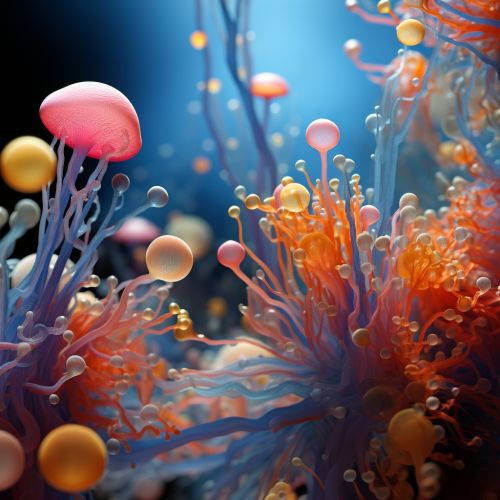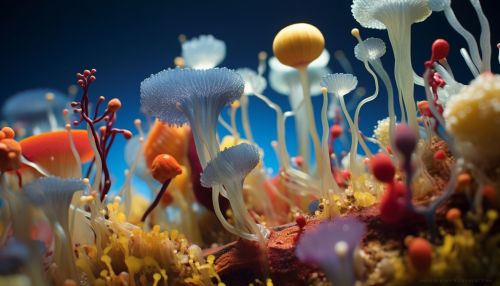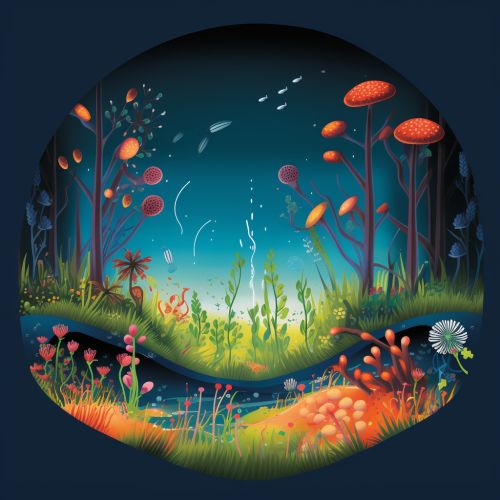The Role of Microbes in Climate Change Mitigation
Introduction
Climate change is a significant and lasting change in the statistical distribution of weather patterns over periods ranging from decades to millions of years. It may be a change in average weather conditions, or in the distribution of weather around the average conditions (i.e., more or fewer extreme weather events). Climate change is caused by factors such as biotic processes, variations in solar radiation received by Earth, plate tectonics, and volcanic eruptions. Certain human activities have also been identified as significant causes of recent climate change, often referred to as global warming.
Microorganisms, or microbes, are organisms that are too small to be seen with the naked eye. They include bacteria, fungi, archaea, protists, viruses, and other microscopic organisms. Microbes play a crucial role in maintaining life on earth, contributing to nutrient cycles, decomposing dead organisms, and maintaining soil fertility.
Recent research has shown that microbes also play a significant role in climate change mitigation. This article explores the role of microbes in climate change mitigation, focusing on their role in carbon sequestration, methane oxidation, and nitrogen cycling.


Role in Carbon Sequestration
Carbon sequestration is the process of capture and long-term storage of atmospheric carbon dioxide (CO2). It is one way to slow the atmospheric and marine accumulation of greenhouse gases, which are released by burning fossil fuels.
Microbes play a significant role in carbon sequestration. They are involved in both terrestrial and oceanic carbon sequestration. In terrestrial ecosystems, microbes decompose organic matter, releasing carbon dioxide back into the atmosphere. However, some of this carbon is sequestered in the soil as microbial biomass or humus, a stable form of organic matter.
In oceanic ecosystems, microbes play a role in the biological pump, which sequesters carbon in the deep ocean. Phytoplankton, microscopic plants that live in the upper sunlit layer of the ocean, absorb CO2 through photosynthesis. When phytoplankton die or are eaten, they fall to the deep ocean, where they are decomposed by microbes. This process sequesters carbon in the deep ocean for hundreds to thousands of years.
Role in Methane Oxidation
Methane is a potent greenhouse gas, with a global warming potential more than 25 times greater than that of carbon dioxide over a 100-year period. Methane is released into the atmosphere by natural processes such as wetland methane production, but also by human activities such as fossil fuel extraction and livestock farming.
Microbes play a crucial role in mitigating methane emissions through a process called methane oxidation. Methanotrophic bacteria, a type of microbe, consume methane as their primary source of carbon and energy. These bacteria are found in soils and in the oceans, where they oxidize methane to carbon dioxide, a less potent greenhouse gas.
Methanotrophic bacteria are particularly important in mitigating methane emissions from rice paddies, a significant source of anthropogenic methane. By inoculating rice paddies with methanotrophic bacteria, methane emissions can be significantly reduced.
Role in Nitrogen Cycling
Nitrogen is a critical element for life, required for the production of proteins and nucleic acids. The nitrogen cycle, the process by which nitrogen is converted between its various chemical forms, is one of the most important nutrient cycles in terrestrial ecosystems.
Microbes play a crucial role in the nitrogen cycle. They are responsible for two critical processes: nitrogen fixation and denitrification. Nitrogen-fixing bacteria convert atmospheric nitrogen into ammonia, which can be used by plants. Denitrifying bacteria convert nitrate, a form of nitrogen found in soil, into nitrogen gas, which is released back into the atmosphere.
These microbial processes help to mitigate climate change by reducing the amount of nitrous oxide, a potent greenhouse gas, in the atmosphere. Nitrous oxide is produced by microbial processes in soil, particularly under conditions of high nitrogen availability and low oxygen availability. By converting nitrate to nitrogen gas, denitrifying bacteria reduce the amount of nitrous oxide in the atmosphere.


Conclusion
Microbes play a crucial role in climate change mitigation. Through their roles in carbon sequestration, methane oxidation, and nitrogen cycling, microbes help to reduce the concentration of greenhouse gases in the atmosphere. Understanding these microbial processes is critical for developing strategies to mitigate climate change.
While much is known about the role of microbes in climate change mitigation, there is still much to learn. Future research should focus on understanding the diversity and function of microbes in different environments, and how these microbes respond to changes in their environment. This knowledge will be critical for developing strategies to harness the power of microbes for climate change mitigation.
